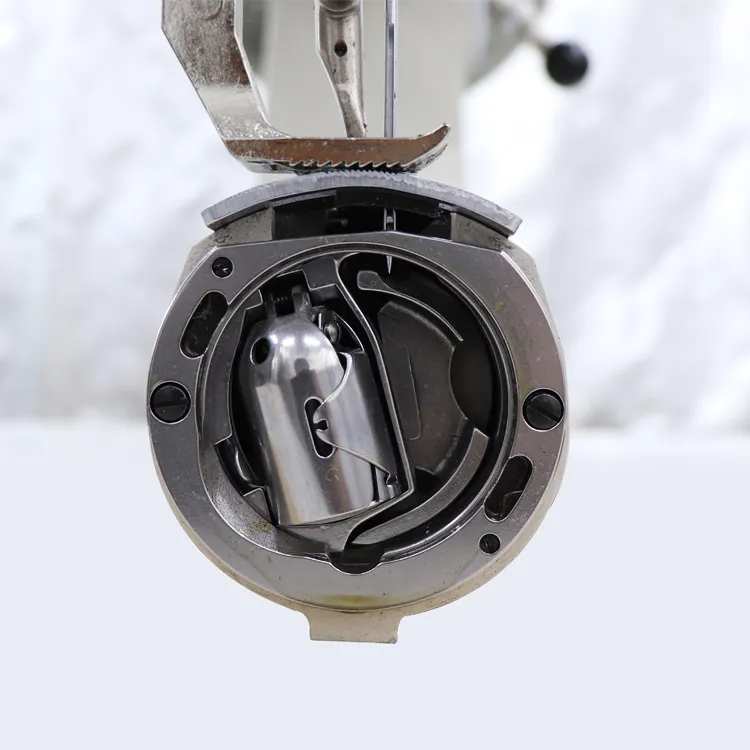sewing thick fabric on sewing machine
Sewing thick fabric can be a challenge, especially for those who are accustomed to working with lighter materials. Whether you are crafting a new piece of upholstery, creating a sturdy bag, or embarking on a quilting project, understanding the correct techniques and tools for sewing thick fabrics is essential. In this guide, we will explore tips and tricks to help you successfully navigate this process.
First and foremost, choosing the right sewing machine is critical. Not all sewing machines are designed to handle thick fabrics. Look for machines that offer a strong motor and a well-constructed needle system. Many machines come with adjustable presser foot pressure, which can be beneficial when dealing with bulky materials. Additionally, machines specifically designed for quilting or heavy-duty sewing often perform better with thick layers.
Next, focus on selecting the appropriate needle. For thick fabrics, a heavy-duty or jeans needle is recommended. These needles are designed to penetrate multiple layers of tough material without bending or breaking. Choosing the right needle size is also important; for most thick fabrics, a size 14 or 16 should suffice. A larger needle will create a wider hole in the fabric, allowing for smoother stitching.
Thread type plays a significant role in the outcome of your sewing project. Opt for a high-quality polyester or nylon thread, as these materials have greater strength and durability compared to cotton thread. Ensure that your thread matches the weight of your fabric; using too lightweight a thread on heavy fabric can lead to breakage or uneven stitching.
sewing thick fabric on sewing machine

Preparation is key to achieving excellent results when sewing thick fabrics. Before you start, pre-wash your fabric to reduce shrinkage and ensure that it is clean. When cutting your fabric, use sharp scissors or a rotary cutter, taking care to make precise cuts for a neat finish. Pinning your fabric layers together helps in maintaining alignment as you sew, and it can be particularly helpful with thick layers.
When it comes to sewing thick fabric, adopting the right sewing techniques is vital. Start with a longer stitch length to accommodate the bulk of the fabric. A straight stitch is typically the best option for most projects. Additionally, consider using a walking foot, which feeds the fabric evenly through the machine, preventing shifting and ensuring consistent results.
Lastly, don’t rush the sewing process. Take your time to guide the fabric gently through the machine, avoiding any jerks or pulls that could lead to uneven stitches. If you encounter a particularly thick area, use a pair of seam guides or a seam allowance ruler to help navigate through the layers smoothly.
In conclusion, sewing thick fabrics may initially seem daunting, but with the right tools, techniques, and approach, it can be a rewarding experience. By investing time in learning how to effectively work with these materials, you can create high-quality, durable projects that will stand the test of time. Whether you’re a seasoned sewer or a novice, mastering the art of sewing thick fabrics will open up a world of creative possibilities.
-
Industrial Cylinder Arm Sewing Machine: Revolutionizing Heavy-Duty SewingNewsJul.28,2025
-
Cylinder Arm Sewing Machine: Perfect for Special Sewing ApplicationsNewsJul.28,2025
-
Cylinder Bed Sewing Machine: Essential for Sewing Complex MaterialsNewsJul.28,2025
-
Heavy Duty Sewing Machine: The Essential Tool for Industrial ApplicationsNewsJul.28,2025
-
Computerized Pattern Sewing Machine: Revolutionizing Precision StitchingNewsJul.28,2025
-
Heavy Duty Industrial Sewing Machine: Power Meets PrecisionNewsJul.28,2025
-
Leather Sewing Machine: The Industrial Standard for Tough MaterialsNewsJul.18,2025





























